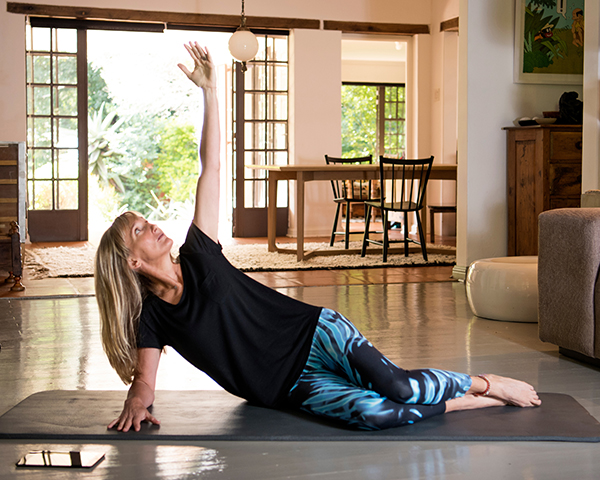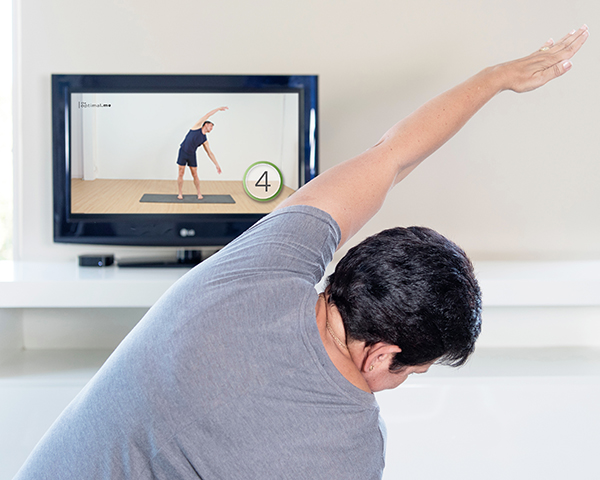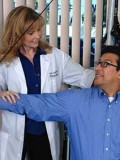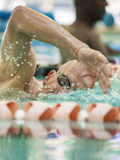
Photo: TheOptimal.me
Today, we are kicking off a four-part series on functional movement with guidance from Liz Grantham, founder of TheOptimal.me, a functional movement website.
We are also taking the free First Steps to Physical Freedom 21-day course to test how we can stay mobile for years to come. Why not take the course with us? Watch for our notes on Facebook and try it out with a free trial. Subscribe to Healthy Aging Magazine to read more about functional movement.
Are you looking at online exercise programs and afraid to try because you might hurt yourself? Certainly, researching options for online fitness programs can be frustrating, disappointing, and even scary when you are 45 or older.
It can be hard to resonate when all you see are 20-year-olds pushing through an aggressive high-intensity interval training (HIIT) or cardio-boxing workout. Is that even safe for mid-lifers and beyond?
Although it’s normal to want to look great moving through midlife, our bodies change and so should our expectations. What’s more important is feeling great and being balanced, flexible, and strong.

Jannie Classen, TheOptimal.me guide to workout classes. Photo: TheOptimal.me
What is Functional Movement?
One might say that “functional movement” exercises that are somewhat “icing on the exercise cake.” Or, you could look at it as the base layer of the multi-tiered cake.
Functional movement exercises are ones tied to real-world body motions. According to Liz Grantham, developer of TheOptimal.me, you become more physically liberated by doing a series of integrated movement routines (IMRs) that work all of your muscles together, balancing your body to help you stay active thus breaking free from the aches and pains of aging.
In just 15 minutes a day, you can prep yourself for your exercise of choice or just moving through your daily life.
Sounds good!
Why Bother?
As we age, we need our bodies to move effortlessly to get us through our day and do what needs to get done without pain or injury. The movements associated with those tasks have been part of our DNA since the beginning of time. However, modern-day living has dramatically changed our body’s ability to perform them.
Our Ability To Move Is linked to Survival
Think about it … from the moment of conception, our ability to move in ever-challenging environments is linked to our survival. Our movement is instinctual, developmental, and dynamic. Throughout history, movement has followed the demands of the times.
Hunters and gathers performed complex movements such as running, jumping, balancing, crawling, and climbing to survive, while farmers performed repetitive limited-range-of-motion movements. Then the Industrial Revolution inched us closer to sitting for longer.
Fast-forward to today: We have become thinkers, often bound to our chairs. Our modern-built environments and technology-driven way of life, built for convenience to drive productivity, actively discourage movement.
Our physical demands might have changed, but the fact that the body is designed to move has not.
A Body in Motion Stays in Motion
We are at a time when life has little to no movement demands, especially in these unprecedented times. No wonder our functional movement, defined as our ability to move the body in the most skillful and energetically efficient way for whatever the task or action required, is being threatened by our lifestyles.
Even more threatening is that our lack of movement comes with dire consequences: obesity, cardiovascular diseases, inflammatory conditions, and diabetes—to name a few.
Over the past decades, to counter this lack of movement, we have invented ways of moving in unnatural circumstances, using unnatural methods with man-made equipment, trying to trick ourselves into believing that demanding movement is as good as moving on demand.
To a large degree, this has been a failure, especially as we age, because often the way we exercise is isolated, working specific body parts—not the whole body.

Photo: TheOptimal.me
Form vs. Function
Overwhelmingly, we have been motivated to exercise to look fit and look good rather than focusing on what we really need: a healthy, functioning body.
Until recently, the approach to exercise and rehabilitation has focused on individual parts of the body, rather than the whole. When we have a joint problem, we’re given exercises for that specific joint. When we train, most programs focus on the individual parts—beautiful biceps, perfect pectorals, upper-body training on Monday, legs on Wednesday. This isolated approach to exercise is often linear and static.
Just because modern conveniences have negated our need to move—we’ve been led to believe that fitness happens in a gym, requiring expensive equipment—does not mean that our natural need for dynamic, natural, functional, adaptable movements has changed.
For those of us in midlife, to remain or become strong and healthy in body and mind, our exercise or movement programs should include a focus on functional movement that creates improved mobility, stability, and functional capacity.
We need to relearn how to move naturally, as our ancestors did.
Balancing: Your Next Act
It is important to understand that our bodies are made of hundreds of parts. It is this symbiotic relationship between the parts and the whole, which needs to function optimally to create harmony and balance in the body.
Our ability to balance is determined by the quality of all our movements, and we rely on many systems in the body to achieve, maintain, and improve our balance. We need muscular strength, flexibility, mobility, and endurance — functionality that decreases with the aging process.
Here lies the secret of integrated functional movement as a means to mitigate the consequences of aging and the risk of injury, as well as keep you healthy longer.
Strength training, muscle toning, and joint flexibility and stability are integrated into movement patterns that mimic the ways we move in real life. Every muscle, joint, and tendon in the body is engaged. Integrated functional movement makes moving through the day a smooth, controlled, and coordinated act of balance.
At a time when we’re looking at getting back to the basics in so many areas of our lives—eating less processed foods, slow cooking, and finding natural remedies instead of pills to heal us—isn’t it time that we start thinking about applying the basics back into our exercise routine?
Opportunity to Test-Drive Functional Movement Course
We are going to test out functional movement over the next few weeks and invite you to join us. You can try it for free for 30 days at TheOptimal.me. Try their 21-Day Course: First Steps to Physical Freedom. It’s an introduction to integrated movement routines (IMRs) and the program is easy to do. You only need 15 minutes a day.
Join us on the Healthy Aging® Facebook and let us know how you are doing with the course.











